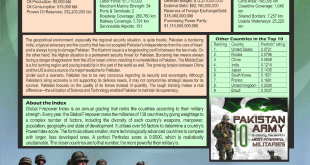For most, human resources management (HRM) is better known within the context of private institutions. HRM generally involves proper procurement, evaluation, recruitment and training of job candidates or applicants. In addition to this, the HR Department is tasked to administer and oversee benefit programmes and manage employees. This is seen every day in most private companies and is an integral part of any company’s survival and, most especially, its success. This is how private organizations are able to find, improve and maintain one of their most valuable resources – human resource – or what is also called human capital. Through the application of different methods and techniques for increased employee growth, effectiveness and retention, many companies within the private sector have flourished.
Within the public sector, the role of HRM is related to the forecasting and planning of human capital, selection and staffing, development and training, performance management, employee discipline, and the promotion of the productivity and welfare of each employee. All these are vital elements to the success of any organization as HRM marshals the productive capabilities of its employees or members. Conceivably, HRM in the public sector could be a major influence in public sector change through the development of human capital.
In the past, the public sector delivered public services and formed its organization through the bureaucratic hierarchy, direct control, centralization, planning and self-sufficiency. In the 1980s, these bureaucratic concepts, with reference to Max Weber, began to be regarded as “no longer relevant” in the present and, therefore, had to be dropped. The emerging recommendation of numerous experts was to utilize market-based public service management, or enterprise culture. The adaptation of these new methods was labelled New Public Management (NPM). Under NPM, tall hierarchies are replaced with flatter and more responsive structures; emphasis is now more on quality; customer satisfaction is emphasized; relations to employment are changed, and result-based management is introduced. In HR, performance-based incentives are utilized as well as performance-related pay; and instead of fixed salaries, pay is locally determined.
Different roles and responsibilities have been set in order to disaggregate separable functions and decentralize management in order to improve quality and performance outcomes. As service delivery in the public sector now focuses more on quality and customer satisfaction, it is only fitting that the public sector makes sure its employees meet the higher standards and expectations. These goals can be achieved through the use of NPM strategies and concepts, particularly in the field of HRM.
The connection between public management and HRM is coherent with efforts to create a methodical response to the restructuring initiatives within the public sector. This can be done through the achievement of operational and staff efficiencies, ultimately affecting the sector through reductions to expenditure by the government, increased quality of service leading to citizen and employee satisfaction.
Future of HRM
The accelerating pace of the changes in this world is driving the organisations to be extra proactive for the sake of their survival amidst the cut-throat competitive environment. The organisations are required to be relevant in their work operations, which means transfiguring the business model in a way that will meet the needs of the workforce in the future.
HR professionals will have to adopt an inevitable role in the transformation process to well align with the future needs of every organisation including maximising the use of new technologies, data management systems and other modern record keeping.
Following are the latest trends, which are likely to shape the workplace and human resource in the next decade. The first and foremost is that ever-increasing automation and artificial intelligence is expected to take over the human personnel in various organisations in the near future. As a result, it is likely that 50 percent of the current jobs in the next ten years would be lost across the globe. This would bring in a challenge for the HR professionals to maximise the creative potential of the workforce than their robotic counterparts.
The performance management system is expected to be replaced with coaching and human development approach, which emphasises on receiving timely and continuous feedback. The offices in the future would not be based upon annual appraisals of their employees; rather they would be directed toward redirecting performance of the employees toward tapping their untapped creative potential.
In addition, the introduction of virtual reality scenarios will require HR departments to become highly tech-savvy, and redesign their approach toward evaluation of candidates. The recruiters will be empowered to analyse the capabilities of the short-listed candidates in real-time using virtual reality. The virtual reality is going to be the cornerstone of the fundamental HR operations, which will ensure improved management of resources, and provision of effective solutions.
Most importantly, the leadership style is required to undergo a dramatic shift as 75 percent of the workforce will comprise millennials. The emphasis would largely be on innovation, individual development, collaboration and the use of technology. Therefore, HR professionals and companies are required to train the leaders as per the requirements of the millennials.
On the whole, Human Resource Department will be direly required to redesign itself being strategic and innovation-oriented. HR professionals will be required to intensely employ the use of cutting-edge, innovative technology and data management to achieve operational efficiency in the future.
 Jahangir's World Times First Comprehensive Magazine for students/teachers of competitive exams and general readers as well.
Jahangir's World Times First Comprehensive Magazine for students/teachers of competitive exams and general readers as well.



